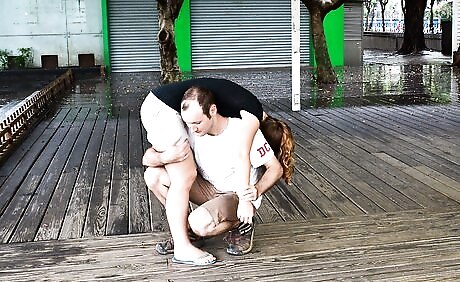
views
Preparing to Carry the Victim

Make sure that there's no possibility of spinal injury before moving the victim. If a traumatic accident has taken place and you think the victim has injured their spine, then do not move them unless it's absolutely necessary to evade an urgent danger, such as a flood. If you absolutely do need to move a victim that might have injured their spine, then you'll need to drag them instead of carrying them over your shoulder to minimize the chances of spinal damage.

Roll the victim onto their stomach if they're on their back. If the victim is on their back, roll them over on their stomach so they'll be easier to lift. To do this, just place one arm on the victim's shoulder and one arm on the same side of their body and push or pull them on to their stomach. If there is time and the person is not breathing, you may need to perform CPR.
Carrying the Victim

Hook your elbows under the victim's armpits. To do this, kneel by the victim's head and hook your elbows under their shoulders, therefore sticking your arms under the person's back and armpits. Your head should be facing the victim's feet and you should have your feet planted on the ground so you can stand easily.

Raise the victim to their feet. Lift slowly, using your legs to support the person's weight. Avoid using the strength of your back to lift them or you may injure yourself. Raise them until their feet are just a foot or so away from being straightened into standing position and are still dragging on the ground a bit.

Place your right leg between the victim's legs. This will help you get a firmer grip on the victim. Just move your weight to your right or dominant leg and stick it between the victim's legs for support. If your dominant leg is your left leg, use your left leg instead and follow the opposite of all of the positioning in the instructions.

Grab the victim's right hand with your left. You should begin to do this as you place your right leg between the victim's legs. If your dominant leg is your right leg, then you should grab the victim's right hand with your left hand; if not, do the opposite. After you do that, you should drape the hand over your shoulder so you have more leverage, with your head planted under the their armpit and side.

Squat down. Keep your back as straight as possible when you do this. Place the victim's body over above your shoulders, so that their torso is relatively perpendicular to the ground. Try to distribute their weight as evenly as you can over your shoulders so that they don't tilt to one side.

Wrap your right arm around the back of the victim's right knee. To do this, put your right arm between the victim's legs to reach behind his right knee. This will help you get a firmer grasp on the victim. Your left hand should still be holding on to the victim's right hand. Gripping the victim with both hands on his knee and arm will help you lift them.

Rise up and lift the victim's right thigh over your right shoulder. Keep your back straight. The left leg and arm of the person should now be hanging behind and the body should be supported by your shoulders. Hold onto the victim's right arm and leg with your right and left hands, respectively, as you stand up. Alternately, you can use your right arm to wrap around the victim's thighs and grab their right hand.

Move the victim. Now that you have the victim draped safely over your back, you should look forward and move cautiously, using your free arm for balance. To do this, you'll need to adjust your weight. Gently adjust the weight to distribute evenly among both shoulders; this will enable you to carry the person for longer distances, possibly 50 feet (15 m) or more. Try to keep the victim's torso level to prevent further injury.




















Comments
0 comment